
No, this wasn't the next more exciting adventure than the previous toboggan ride down the steep streets of Funchal. In any case, since we arrived on a Sunday, even that shore excursion was not available.1
Since it was a pleasant day, we strolled through the pedestrian zone,

into the Municipal Park.
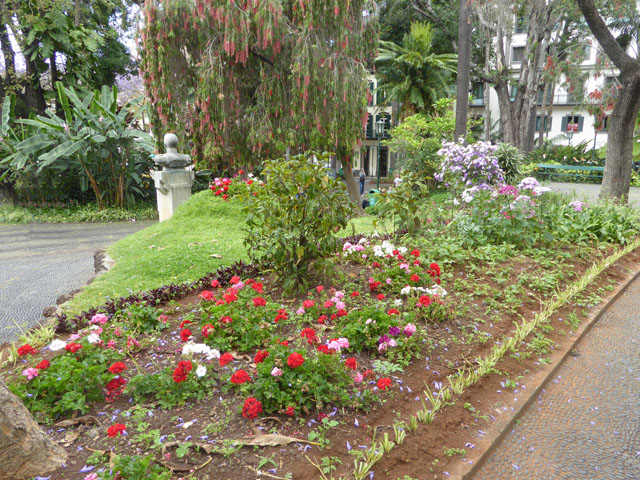
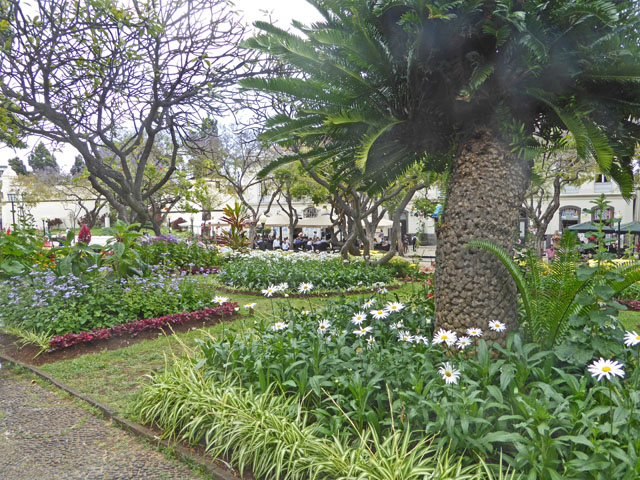
Some of the occupants needed a little assistance.

The artistic designs of the street set off the 15th century San Lorenzo palace that includes a Military Museum, as well as exhibits of Portuguese and European decorative arts and a gallery of royal portraits.
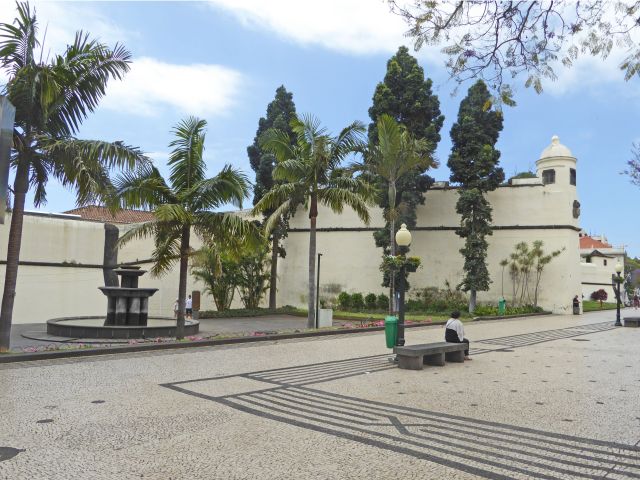
The guard at the Bank of Portugal had little to do.

Although this was a Sunday, the historic Cathedral – dating back to the 1500s, one of the oldest buildings in Funchal – was closed for renovations, so we were unable to verify that "the ceiling is a masterpiece of wood carving, one of the best in Portugal."

We arrived at the Santa Luzia River, which flows down from the mountains. It had been somewhat of a dry spell, based on all the bare spots. However, we noticed something unusual – on the upstream side, there seemed to be waves coming up from below.
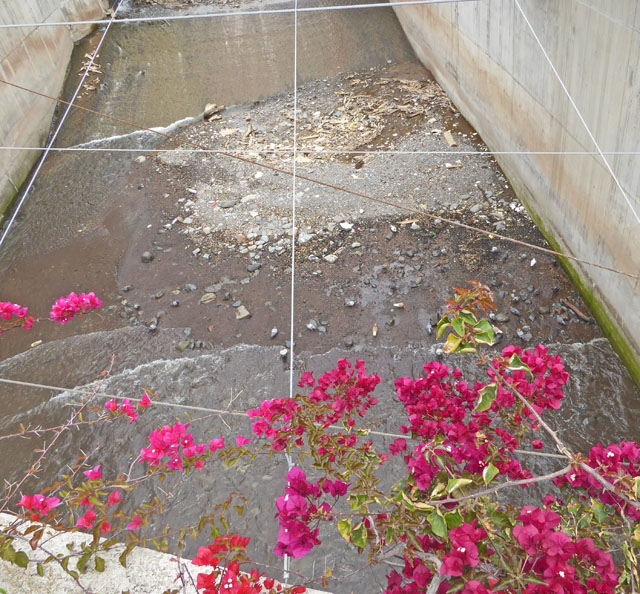
In fact, it was the incoming tide creating a tidal bore. Not quite the magnitude of more famous locations, but enough to reverse the rather anemic flow for a while.
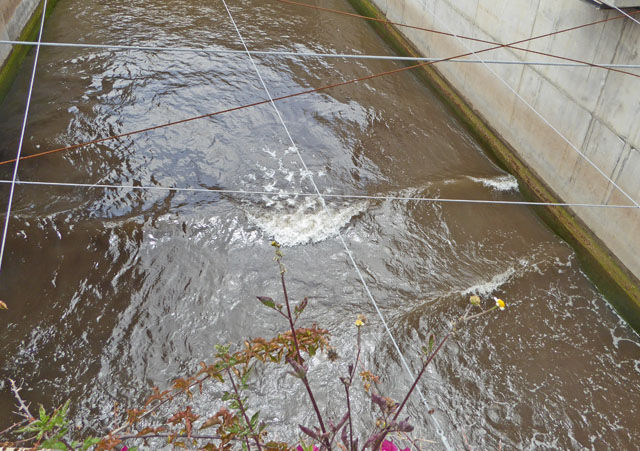
However, the river is not always this docile. During Carnival in February of 2010 raging torrents caused by violent rainstorms overflowed the banks of the Santa Luzia and two other rivers in Funchal and cascaded down the streets. The flooding killed 49, injured 250, and destroyed 650 homes. Mudslides further up the mountain caused additional destruction.
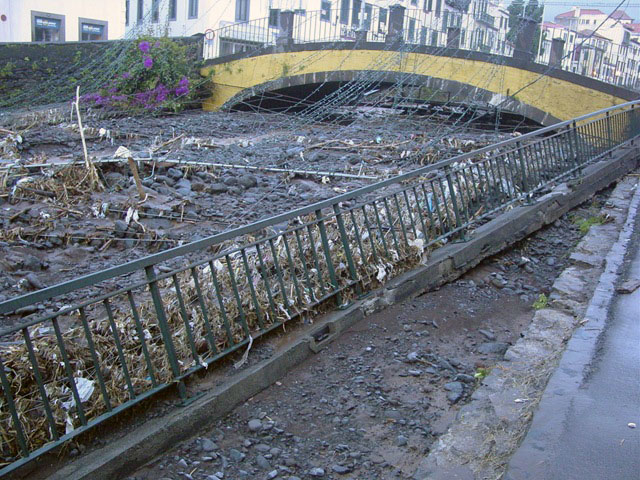
In case you wondered, I didn't return to take these dramatic photos – they're from news reports at the time.
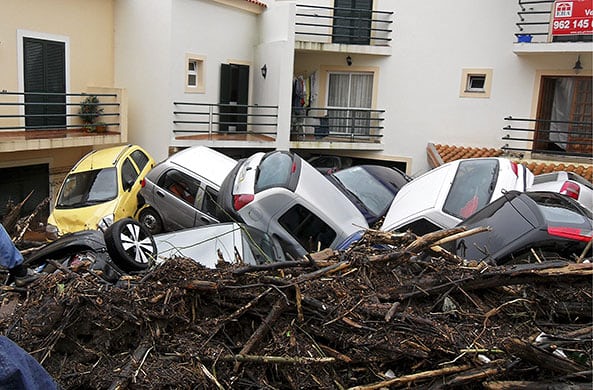
Engineering works in 2013 to stabilize the course of the rivers revealed remains of a fortress dating from 1572.
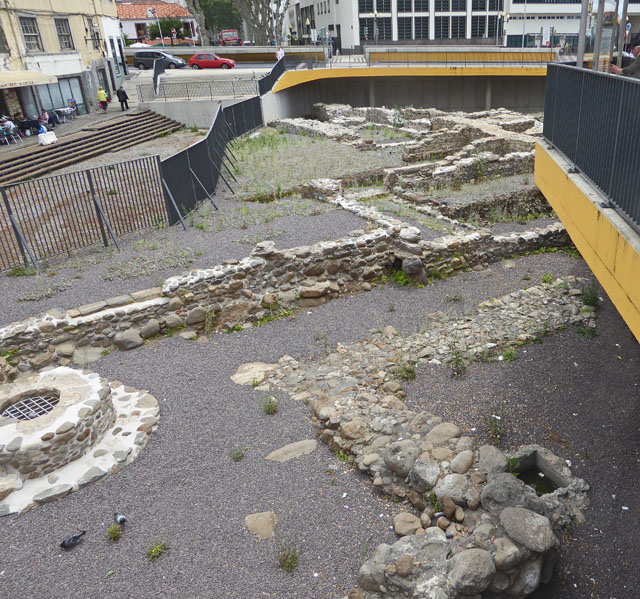
Our ship, the Seabourn Odyssey, awaited us across the bay.

As we sailed away, I photographed the line of pylons that defined our gondola route up to Monte, from where we had begun our toboggan descent. However, I noticed the movement of a slight blue object at the lower left.
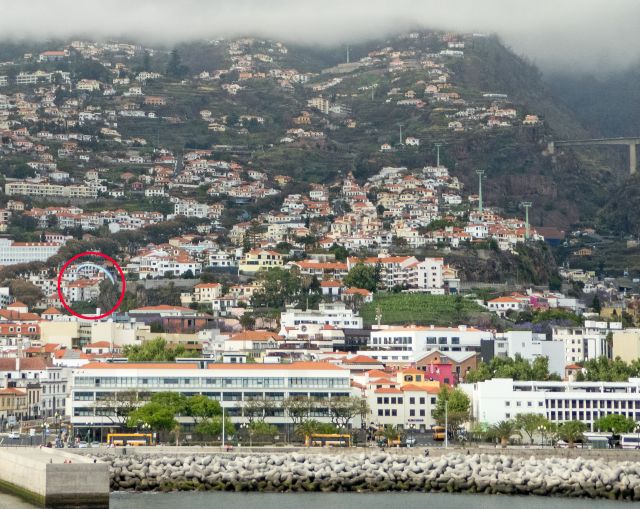
A close-up revealed – a paraglider! The pilot seemed to be well clear of any obstacles, but I wondered where he was going to land, since the open spaces were populated with buses, trucks, cars, or pedestrians.
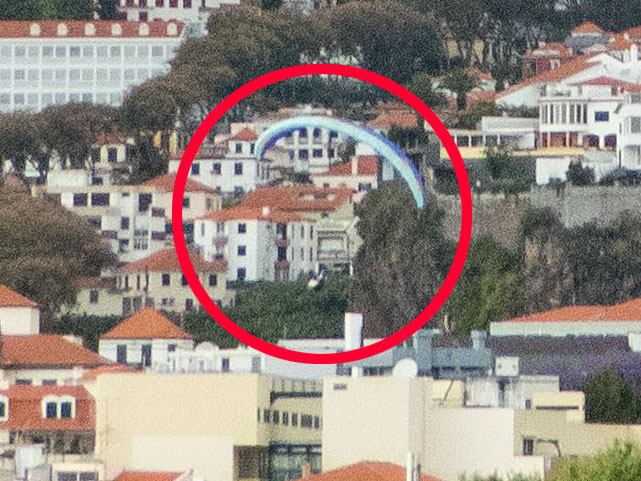
As he came closer, he obviously had a landing site in mind.
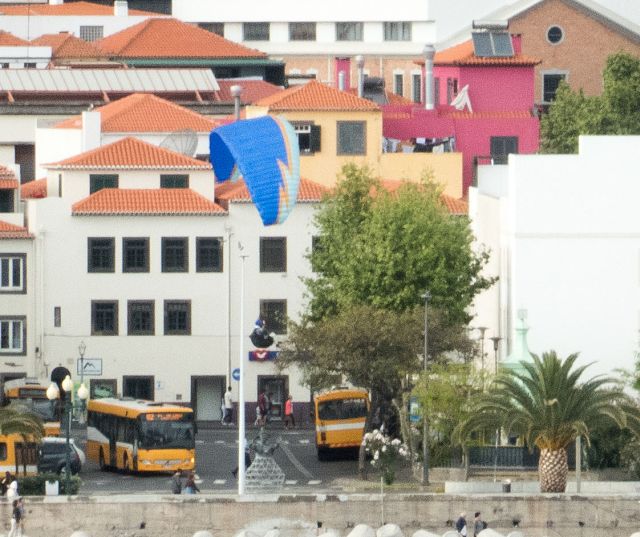
And indeed, he safely alighted on a gravel path just outside the city wall. It seems clear that this wasn't the first time he'd made the flight!
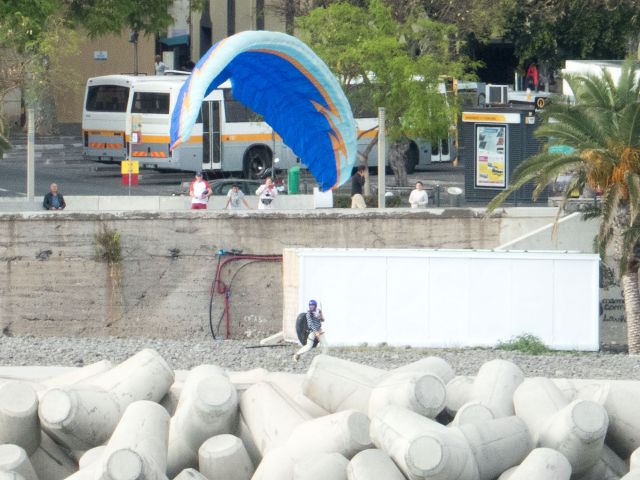
1 While searching the Internet for the significance of a sculpture of two heroic figures from the old Custom House building,2
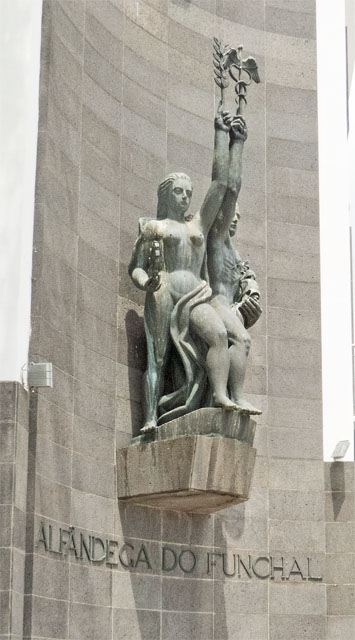
I came across a disquieting account of another toboggan ride some years earlier. Coincidentally, the narrator was on the Emerald Princess, on which we had previously sailed.
Also coincidentally, their ship had arrived on a Sunday. However with over 3,000 passengers aboard, there was sufficient demand that the funicular and toboggan ride were called into service. We had found in other ports that merchants were amenable to opening when the total number of cruise ship passengers was large enough to be profitable. Our lone 450-passenger ship was clearly too small to qualify.
He said that during one of the times that the gondoliers were pulling the ropes (for us, twice after the initial launch, when friction slowed us, and they had to re-grease the runners before taking off again) one of them lost his hat and reached back to grab it. In the process, he let go of his rope.
The sled proceeded down the hill with only one man trying to steer. It turned and flipped over, hurtling the three passengers onto the unyielding pavement. In addition to the road rash and bruises suffered by all, the passenger at the bottom of the pile sustained facial lacerations, cracked ribs, and a broken collar bone.
We had never considered such a possibility, but I'm sure we signed waivers absolving anyone of responsibility for such a calamity. The only caution we had received was that perhaps it was not suitable for those with back problems, which I had thought might be because we'd be tobogganing over cobblestone streets. However, that wasn't the case -- it was smooth asphalt all the way.
I'm not quite sure how this happened, because the "wheelbase" is quite wide, and often on our ride we slid sideways, and not just while going around corners. In fact, I've just located a YouTube video that shows sidewards sliding as commonplace. (You may recognize some of the areas I captured in my few photos.) Perhaps they hit some obstacle in the street, or a curb, or the edge of the rear platform hit a wall at the wrong angle, causing an overturning.
(Our toboggan wasn't within view of any others, unlike in the video. The headways must be shorter when there is a large number of passengers. Also, they must add many more gondoliers, sleds, and trucks and vans to transport the sleds and gondoliers back to the start.)
In any case, it was the end of the cruise for at least that passenger. They didn't allow him to reboard the ship, to avoid any liability for further medical problems. Fortunately he had travel insurance and was able to receive medical attention and board a plane for home. However, if a more serious medical evacuation is needed, the coverage offered by a standard travel insurance policy may have unexpected limitations.
As an example, a friend broke a femur, the large bone in the upper leg, in the Canary Islands. The terms of the travel insurance policy provided transportation to the nearest facility that was deemed able to provide the required level of medical care, as well as the cost of necessary treatment.
However the hospital staff spoke little English, and their own medical Spanish was limited. The barely functioning air conditioning was only turned on during daylight hours, and the windows had no screens. The water was not potable, and the food – what little there was – was dismal.
They realized they would have to hire a translator, rent an apartment and a car for several months after an operation, until they'd be able to board a plane under their own power. In the meantime, they would have to have someone manage their affairs at home, some 5,000 miles away, including continuing care of their pets.
Through a friend, they were able to contract an air ambulance service, and although I didn't know how much it cost, we've heard it can be $100,000 or more. For years we've purchased a supplemental medical evacuation insurance with MedJet, which will transport you to a hospital of your choice, with whom they now also have a policy.
Since we frequently travel, until recently we've purchased five-year policies. However I've now reached an age where it is only available for one year at a time, and it requires the answers to multiple medical questions, verified by statements from appropriate doctors. Fortunately, the answers have been satisfactory to them. However, once I reach 85, I'm on my own!
2 I never was able to learn the significance of the figures.